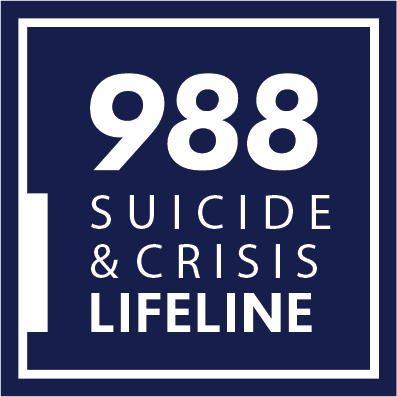
Suicide is a leading cause of death in the United States, according to statistics gathered by the Centers for Disease Control and Prevention. Nearly 46,000 individuals died by suicide in the U.S. in 2020 and some 12.2 million American adults contemplated it. Nearly half a million lives (480,622) were lost to suicide from 2010 to 2020. During the same period, the suicide death rate increased by 12% and as of 2009, the number of suicides outnumbered those caused by motor vehicle accidents.
On July 16, 2022, the federally mandated crisis number, 988, will be available to all landline and cell phone users, providing a single three-digit number to access a network of over 200 local and state funded crisis centers. 988 callers who are suicidal or experiencing a mental health crisis will be routed to the National Suicide Prevention Lifeline and connected to a crisis counselor where they may receive crisis counseling, resources and referrals, and in some cases and where available, mobile crisis units may be dispatched. The Lifeline will accept calls, texts, and chats from anyone who needs support for a suicidal, mental health and/or substance use crisis.
While 988 is expected to fill gaps in mental health crisis care and decrease adverse events and suicides uncertainty remains. The federal government mandates 988, but states are responsible for most of the funding and implementation. So far, the U.S. Department of Health and Human Services has allocated roughly $400 million to help with the 988 rollout.
The 988 helpline will be available nationwide for call (multiple languages), text or chat (English only) on July 16, 2022. Until then, those experiencing a mental health-related or suicidal crisis, or those looking to help a loved one through a crisis, should continue to call the existing National Suicide Prevention Lifeline at its current number, (800) 273-8255. Suicide is preventable.

